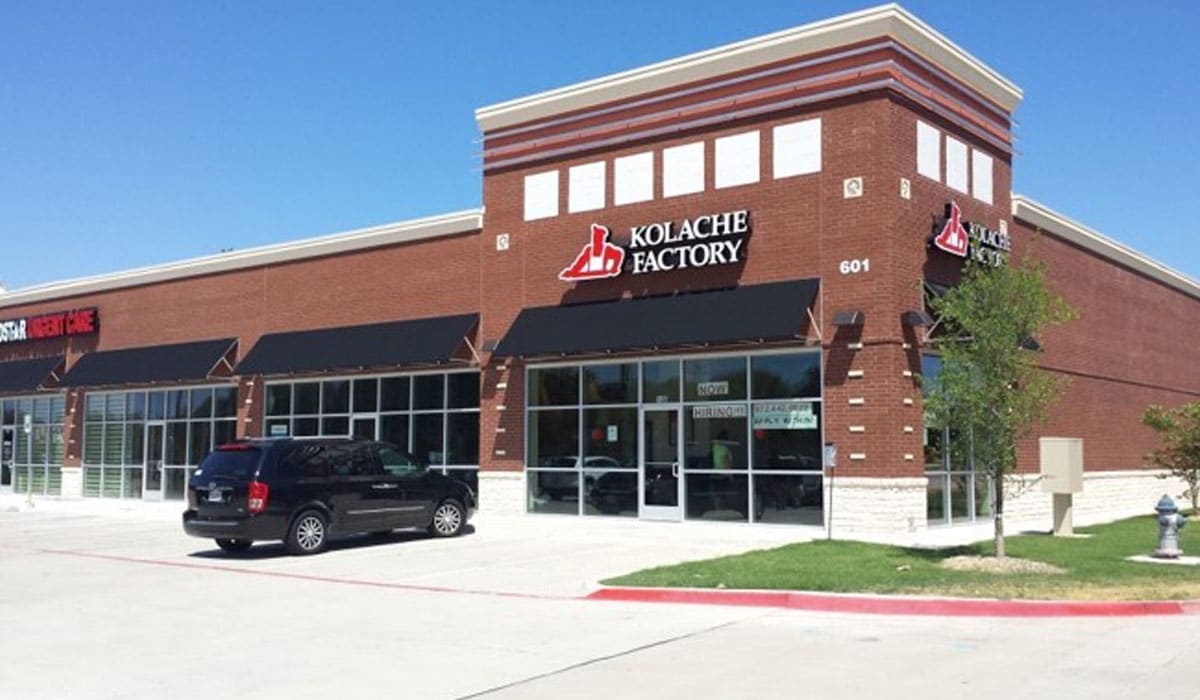Dawn Nielsen started working at her parent’s bakery business, Kolache Factory, when she was 9 years old, helping to scrub the floors. At 12, she began waiting on customers. Now, 40 years since her parents opened the first location in Houston, there are 60 locations in nine states, and Nielsen is the chief operating officer.
Nielsen’s parents, John Banks and his late wife Jerilyn, founded the bakery to fill the need for a quick and fresh breakfast that could be eaten on the go. The answer was a kolache, a Czechoslovakian pastry filled with fruits, meats, and cheeses.
“It has been a labor of love for many years to grow Kolache Factory from our little shop on the corner of Westheimer and Gessner in Houston to what it is today…,” president and founder John Banks says. “I credit a lot of the recent growth to my daughter Dawn, who, as chief operating officer, has helped keep Kolache Factory fresh and on the cutting edge.”
The kolache was introduced to America in the 1850s when Czech settlers came to Texas. Traditionally, the pastry is filled with fruit, but Czech Texans made varieties with meat popular. Kolache Factory, however, has pushed the envelope outside of traditional fillings, making flavors like bar-b-que brisket, pepperoni pizza, sausage, jalapeno, and cheese.
Every year, the brand holds a “Kolache Olympics” to add new flavors to the menu, Nielsen says.
“We’ve had quite a few franchises that have come up with some great flavors,” she says. “As a matter of fact, the sausage and gravy flavor was one that was submitted many years ago by a franchisee who is no longer with us, and it’s one of our number one sellers. It’s always great to have new people and perspectives, especially from different regions to bring something new to the table.”
The brand has endured many recessions, the most recent being during the COVID-19 pandemic. Though Kolache initially struggled—Nielsen waived royalty fees for franchisees for six months—it recouped to the tune of its best year of sales on record in 2021.
“I call it the pandemic-proof food,” Nielsen says. “Our model from day one in 1982 was grab and go; to get our customers in and out of the store within two minutes.”
That grab-and-go model lent itself well to customers who adopted the pastry as their go-to breakfast food—most of Kolache’s sales happen between seven and 10 a.m. It also translated to curbside pickup and delivery during the pandemic, and gave the brand the boost it needed to succeed while many other foodservice businesses were struggling.
Nielsen says that although the morning is Kolache’s bread and butter, times are changing. As consumers’ schedules become more flexible due to remote work, they are able to visit businesses later in the day.
“They can come in when they choose as opposed to having to be at work at eight,” Nielsen says. “But it’s still primarily breakfast depending on the region of the country. In the Midwest, we’ll have a big hit for breakfast and then we’ll have another big hit for lunch, so it’s interesting to see how it kind of evolves when it moves outside of Texas.”
Kolache started franchising in 2000, and currently has 32 franchise locations in addition to its 28 corporate stores. Nielsen says the company approaches different markets in different ways depending on the population’s familiarity with its product. Places like Nebraska and Texas, where large populations of Czech settlers came in the 1800s, are naturally more familiar with the product. For locales where the kolache is relatively unknown, the brand has to lean on marketing and education.
“We really encourage our franchisees—because they’re primarily the ones that are opening outside of the state—to drop off kolaches to their local car dealerships or medical centers and really get involved in the community,” Nielsen says. “The number one way we get the recognition that we have is because of all the donations that we do for local charities or fun runs—we’re getting the product in the hands of people because once they bite into it, then they understand it.”
That loyalty will translate through a new rewards program that rolled out in October along with a mobile app. According to Nielsen, the new program will provide incentives for customers like earning points to get free items. The app is connected to Kolache’s loyalty program, email, and online ordering, which streamlines the customer’s experience.
Quick-service mobile apps have only become more and more important since digital was catapulted to the front of everyone’s minds at the beginning of COVID-19. The top 10 of them were downloaded 10.3 million times in August.
“Now everything’s under one umbrella, which for me is great because you’re dealing with one company as opposed to four companies,” Nielsen says.
To mark the occasion of its 40th anniversary, Kolache Factory had a month full of promotions in September, culminating in 40-cent kolaches on the actual anniversary. When looking toward the future, Nielsen says she’s excited to continue watching the brand grow—there’s franchise interest in places like California and Florida.
More than anything, Kolache Factory continues to center family in its business. Nielsen’s daughter, who has a degree in marketing, is coming on board next year.
“I’m looking forward to her taking on some of my roles; to have a younger person’s perspective,” Nielsen says. “I’m very excited about that.”






